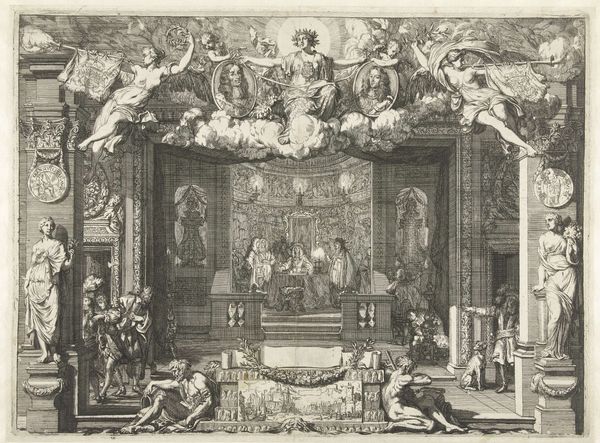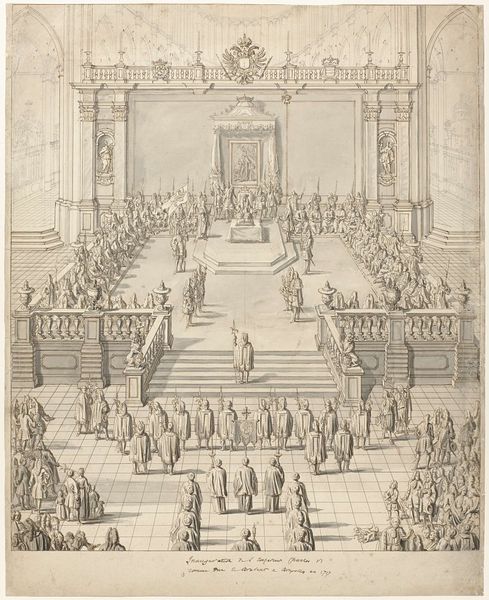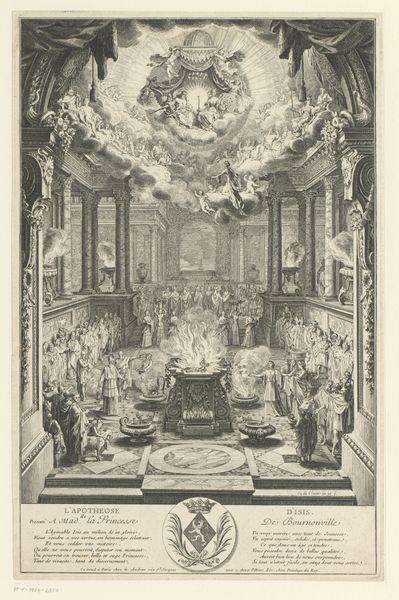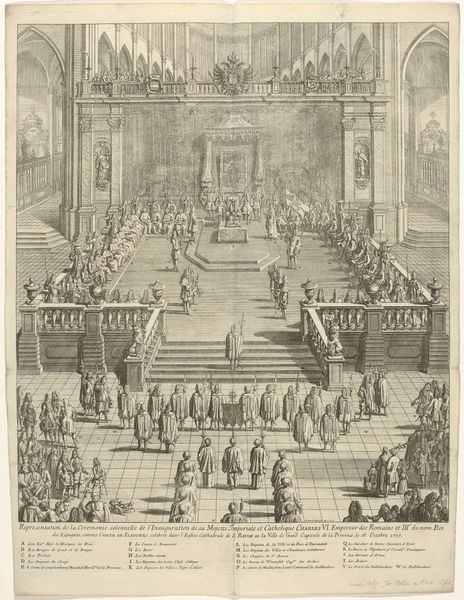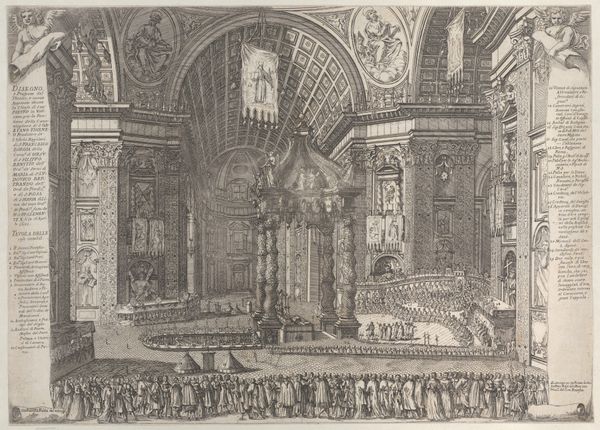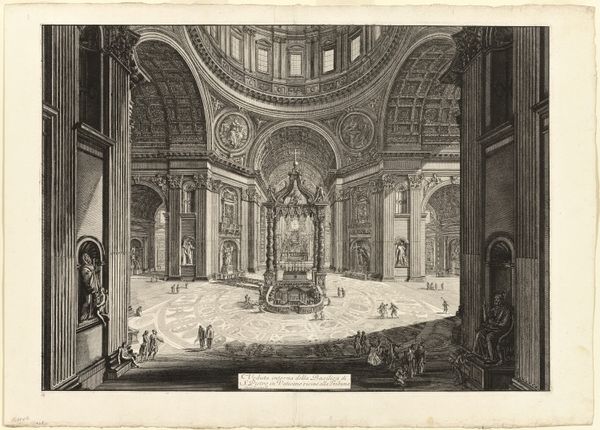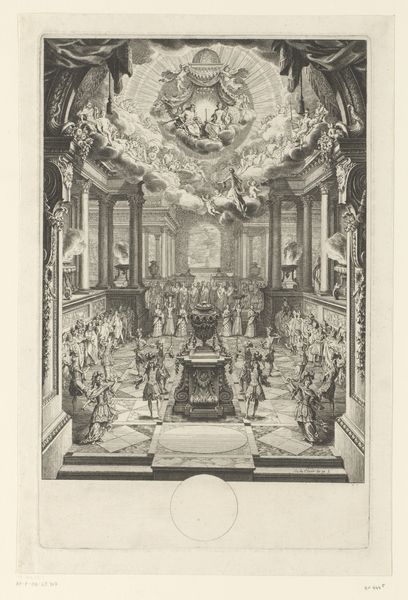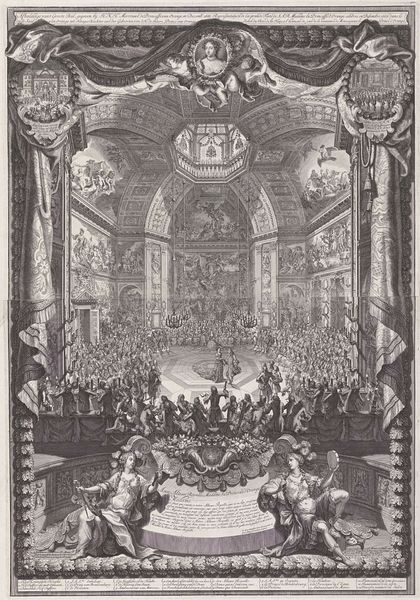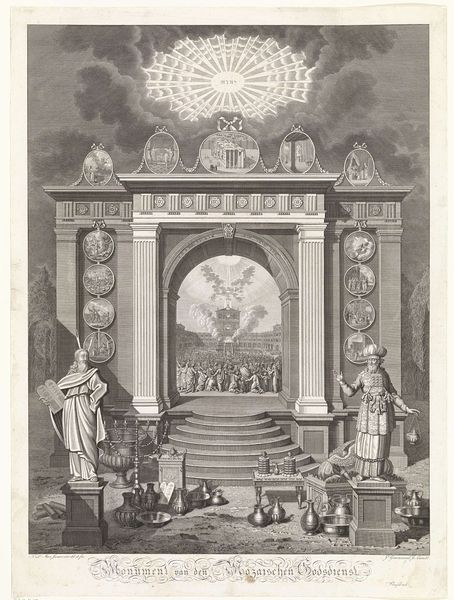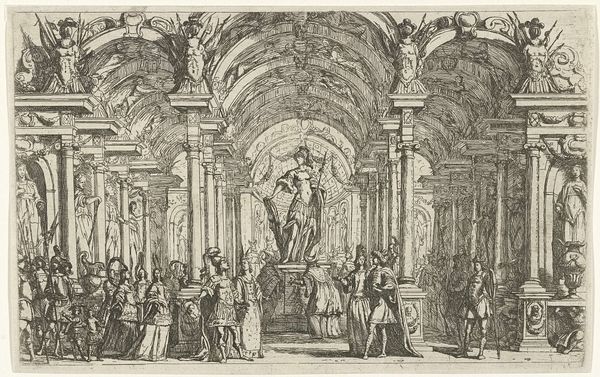
Katafalk i Christiansborgs Slotskirke ved Frederik V's død 1768
0:00
0:00
Dimensions: 468 mm (height) x 326 mm (width) (bladmaal)
Curator: Oh, the weight of history! Just look at this scene. We're looking at an engraving titled "Katafalk i Christiansborgs Slotskirke ved Frederik V's død," or, the Catafalque in Christiansborg Palace Chapel at the Death of Frederik V. It's dated 1768. The artist is Johannes Gottfred Bradt. Editor: Whoa, heavy vibes. The scale is immense, almost dizzying, like the room stretches forever upward, right into the swirling heavens. All in somber greyscale. Makes you feel a bit like an ant at a giant's funeral. Curator: Precisely. Bradt really captures the grandeur, but also the somber mood of the royal court in mourning. You can see the entire chapel transformed for the king’s funeral. Catafalques, these elaborate, often temporary structures, were common displays during the funerals of prominent people during the baroque era. The artist’s portrayal is not just descriptive but evocative. Editor: And what's up with that giant pyramid in the center? I mean, it's certainly imposing, and seems like the absolute focal point, but feels...unexpected? Curator: It's fascinating, isn't it? The pyramid, likely draped in fabric, is adorned with symbolism – the crowned 'F' probably referring to Frederik. It points heavenward. Funerals, particularly royal ones, were huge public statements. They were carefully orchestrated events, loaded with imagery, meant to reinforce power structures and ensure dynastic continuity even in death. They affirmed the monarchy's divine right. Editor: It almost feels staged. Like, the people milling about seem posed, consciously aware of being part of the spectacle. There is little genuine emotion captured. More theater than tears. It is like being in a painting inside a painting. Curator: Absolutely. That's a key insight. Remember, this is an engraving intended for distribution, a visual record crafted to communicate specific messages. Editor: It is like early photoshop – or Instagram. Crafting the correct image for the consumers and supporters. Even now the work emits this feeling of importance of its creation. Curator: True – although, for those that could read at the time, inscriptions at the bottom give greater and additional details. Engravings such as these, had several purposes. They made for relatively inexpensive reproductions and distributions of current or historical events, acting like pictorial newspaper representations that might capture certain historical events. Editor: Makes you wonder how accurate this depiction of this must have actually been. A royal funeral, then and now, must have involved intricate planning and symbolism that is interesting to explore. Thanks for bringing me to this piece. Curator: Indeed, these kind of prints act as interesting documents which are a fusion between reality, documentation and spectacle for its consumers. It is quite a rich space for scholars and art lovers alike.
Comments
No comments
Be the first to comment and join the conversation on the ultimate creative platform.

